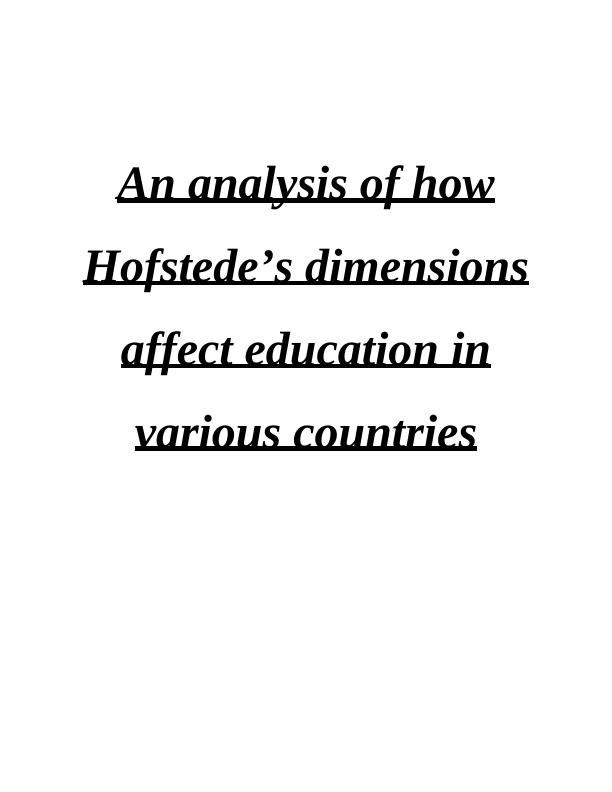How Hofstede’s Dimensions Affect Education in Various Countries
19 Pages7682 Words80 Views
Added on 2023-06-12
About This Document
This report analyzes the impact of Hofstede’s cultural dimensions on education in Japan, Romania, and France. It explores power distance, individualism vs. collectivism, uncertainty avoidance, masculinity-femininity, and time orientation. The report also discusses the changes in the education system in Romania after the collapse of the communist regime.
How Hofstede’s Dimensions Affect Education in Various Countries
Added on 2023-06-12
ShareRelated Documents
End of preview
Want to access all the pages? Upload your documents or become a member.
Study Skills for Higher Education: Assignment
|6
|1467
|107
Case Study on Euro Disneyland Cultural Differences - Desklib
|13
|3226
|2108
Hofstede’s Cultural Dimensions Assignment
|6
|1348
|485
Assignment - Cultural Diversity
|9
|2256
|51
Intercultural Business Management: Cultural Dimensions and Strategies for Managing Cross Cultural Situations
|7
|1860
|100
International Management Assignment - Aditya Birla group
|13
|4389
|460




